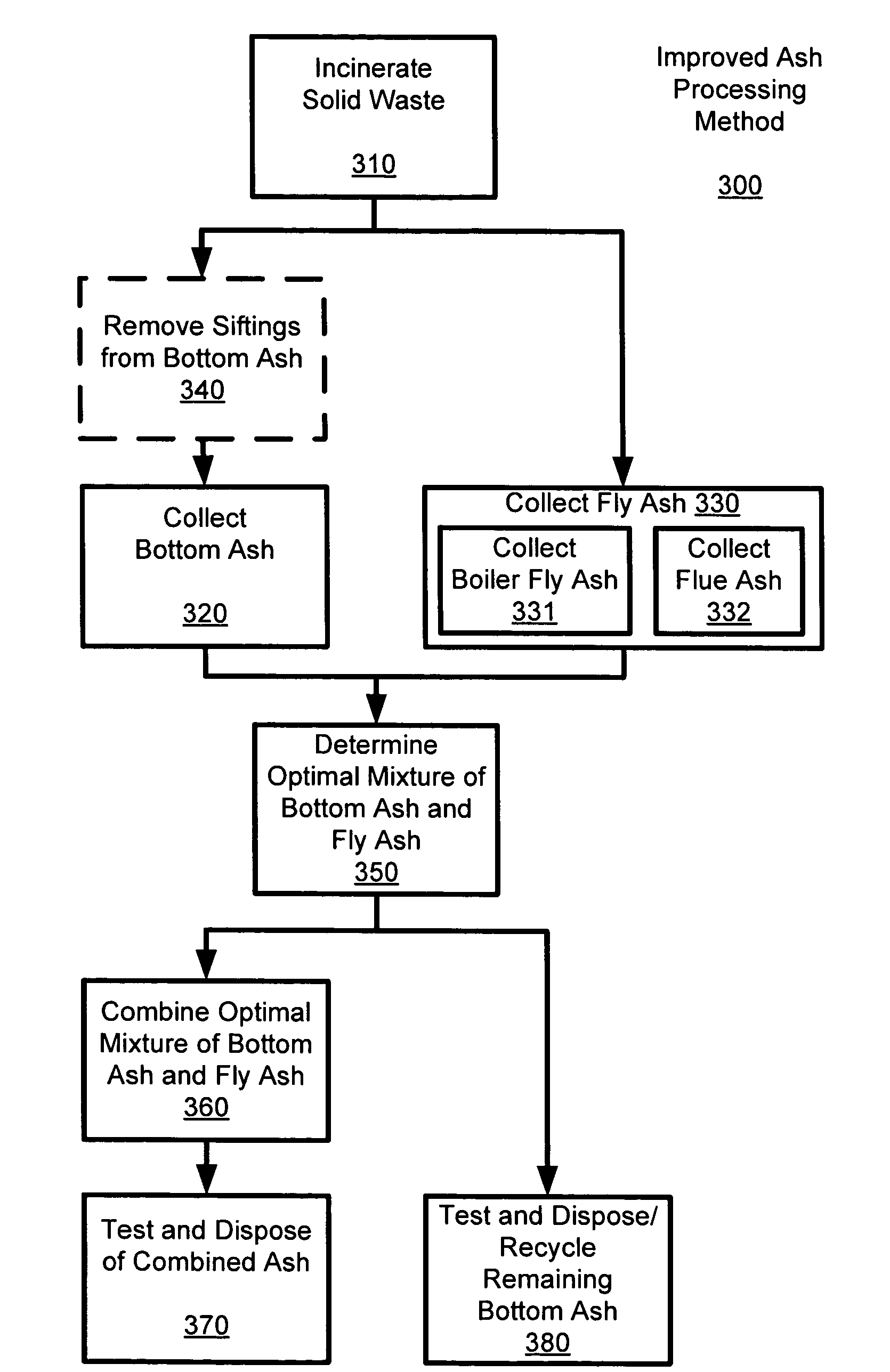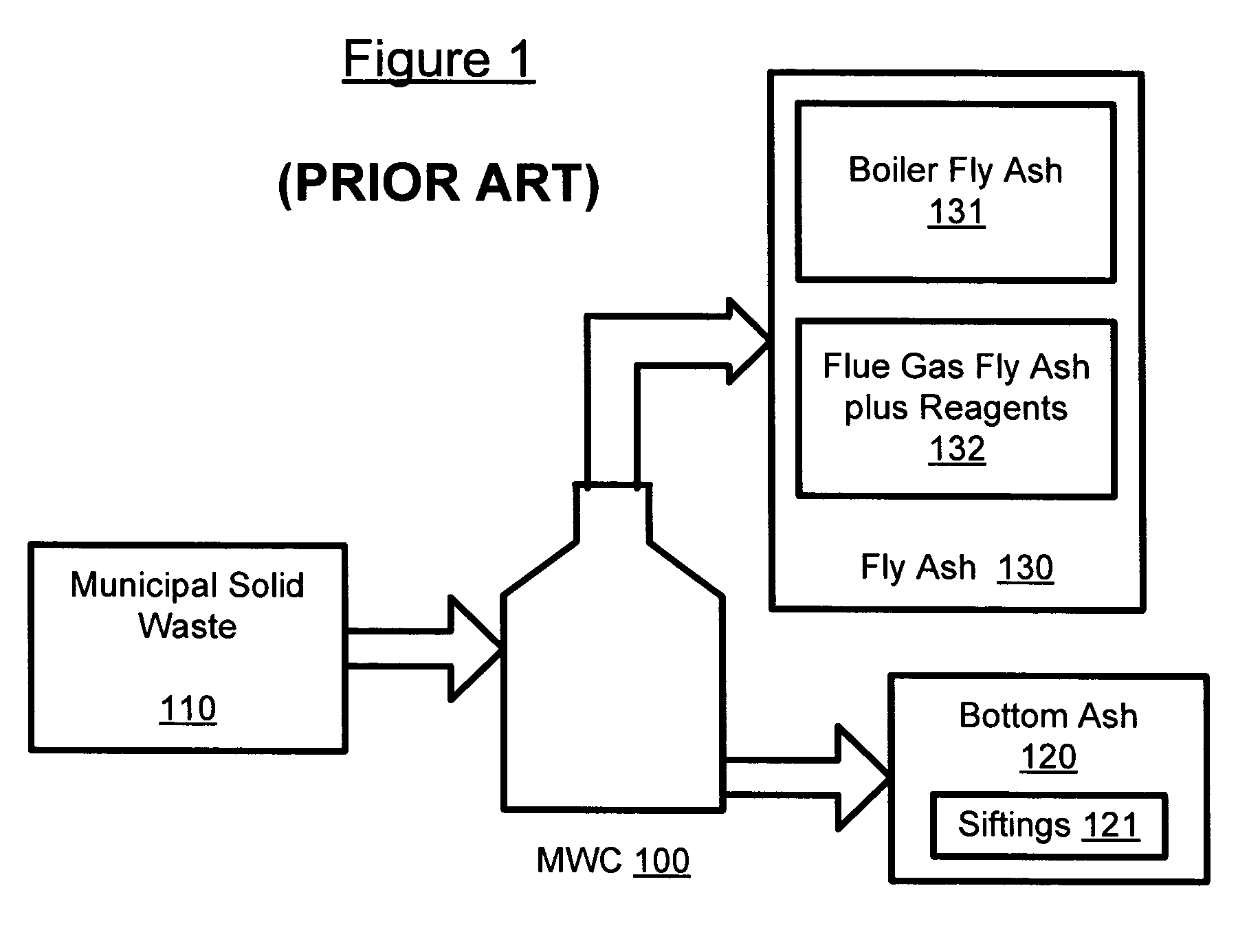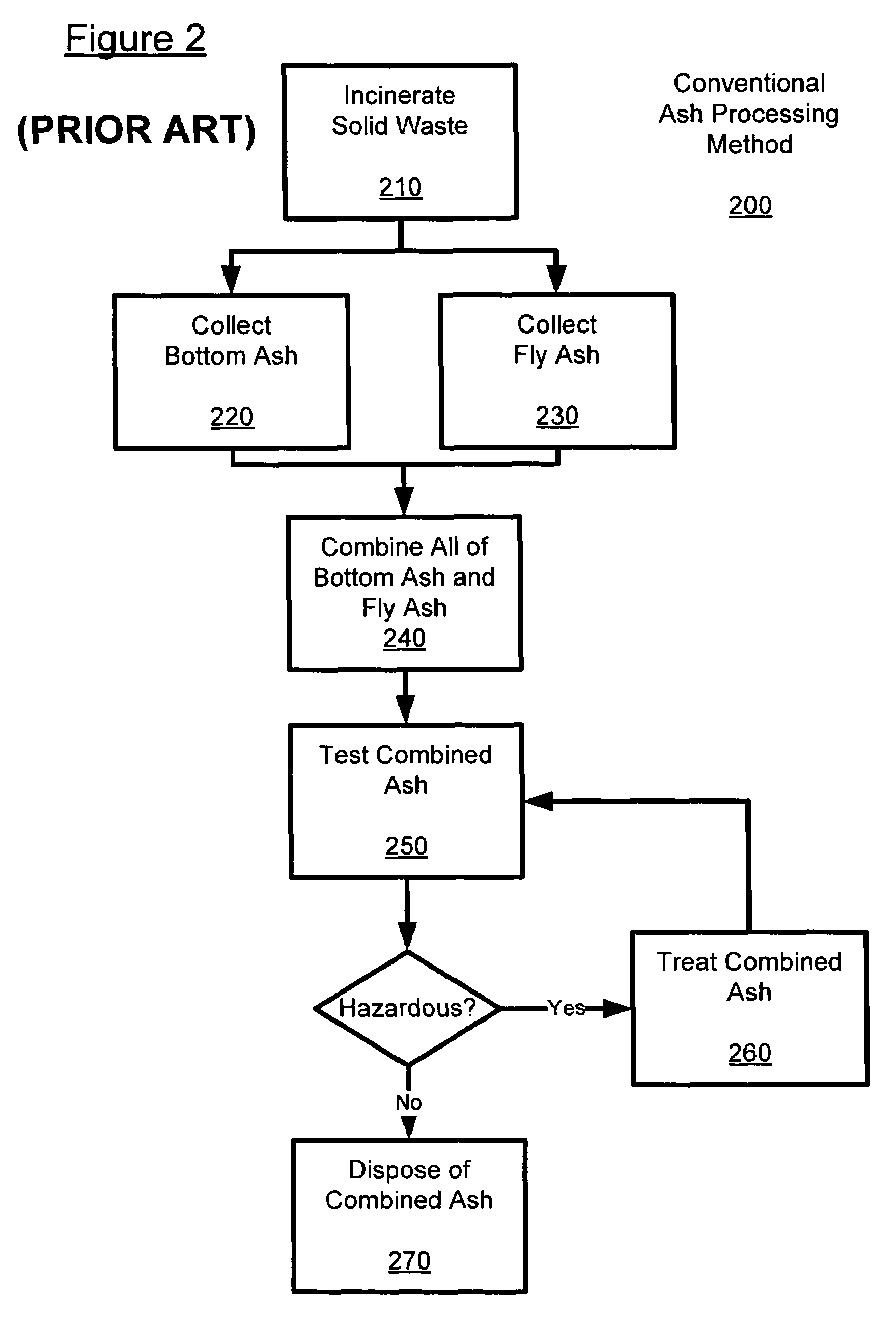Method to improve the characteristics of ash from municipal solid waste combustors
a technology of solid waste combustors and characteristics, applied in the field of improved, can solve the problems of increasing the cost of solid waste disposal in these areas, requiring complex and costly machinery or chemical treatment, and difficulty in establishing new landfills, so as to improve the overall mass, improve the recycling potential, and reduce the cost
- Summary
- Abstract
- Description
- Claims
- Application Information
AI Technical Summary
Benefits of technology
Problems solved by technology
Method used
Image
Examples
Embodiment Construction
[0032]Referring now to FIG. 3, the present invention provides an improved ash processing method 300. As described in greater detail below, in ash processing method 300, the FA 132 from a flue gas treatment system is combined with a portion of the BA 120 (which may additionally include boiler FA 131 and / or siftings). The resulting CA mix is subjected to periodic TCLP testing, and typically meets regulatory requirements with minimal additional processing or additives.
[0033]In the ash processing method 300, following the incineration of the MSW in step 310, the BA and FA are collected, respectively in steps 320 and 330. Specifically, the collection of the FA in step 330 includes collection of the boiler FA in step 331 and the flue ash in step 332 using known techniques. Typically, the collection of the flue ash in step 332 includes treatment of the flue ash, as described above, through the addition of alkaline lime reagents.
[0034]In step 350, various combinations of the FA and BA are t...
PUM
| Property | Measurement | Unit |
|---|---|---|
| pH | aaaaa | aaaaa |
| diameter | aaaaa | aaaaa |
| pH | aaaaa | aaaaa |
Abstract
Description
Claims
Application Information
 Login to View More
Login to View More - R&D
- Intellectual Property
- Life Sciences
- Materials
- Tech Scout
- Unparalleled Data Quality
- Higher Quality Content
- 60% Fewer Hallucinations
Browse by: Latest US Patents, China's latest patents, Technical Efficacy Thesaurus, Application Domain, Technology Topic, Popular Technical Reports.
© 2025 PatSnap. All rights reserved.Legal|Privacy policy|Modern Slavery Act Transparency Statement|Sitemap|About US| Contact US: help@patsnap.com



